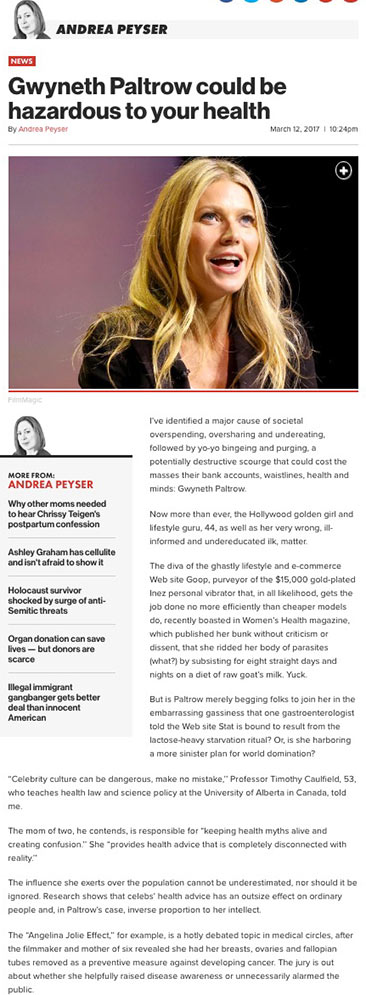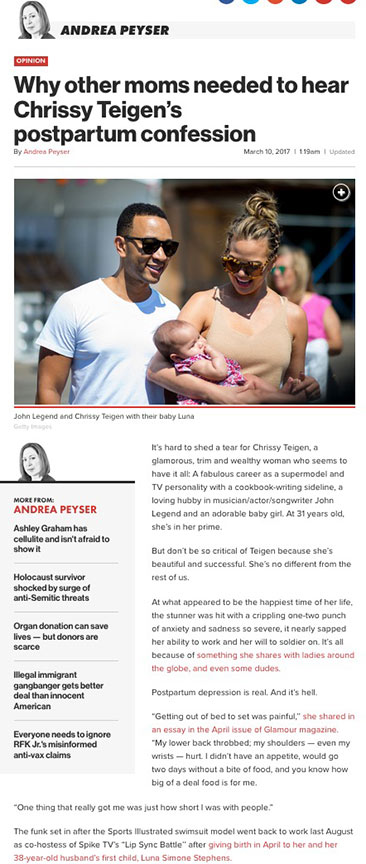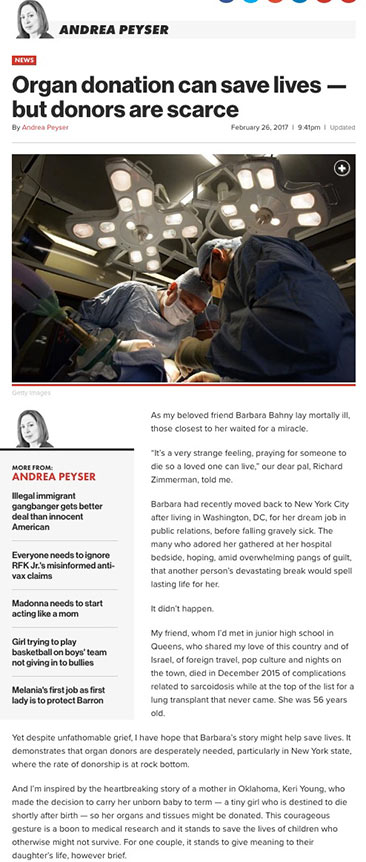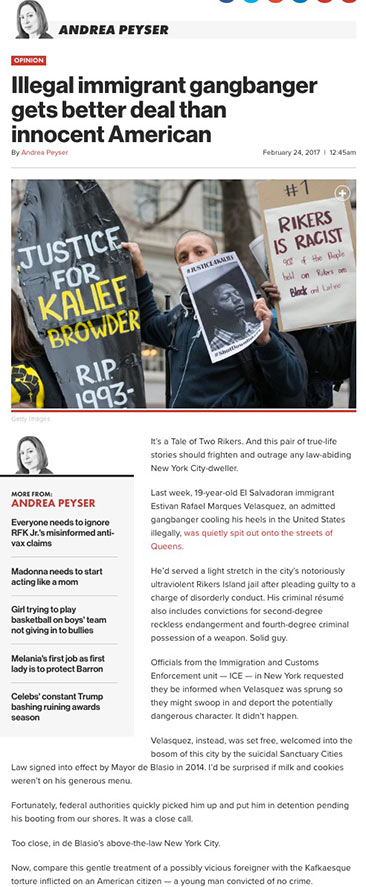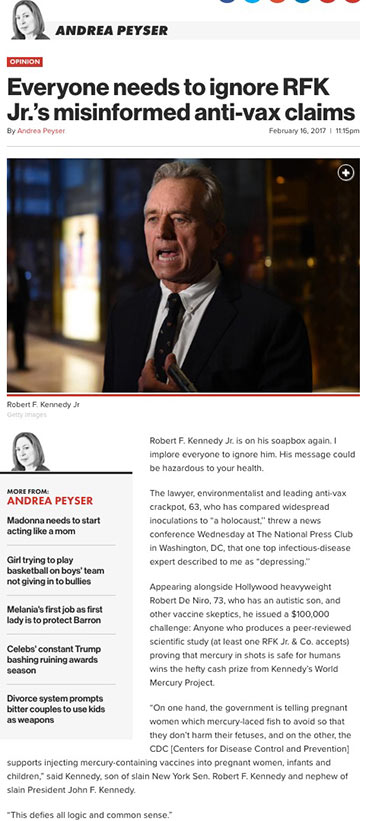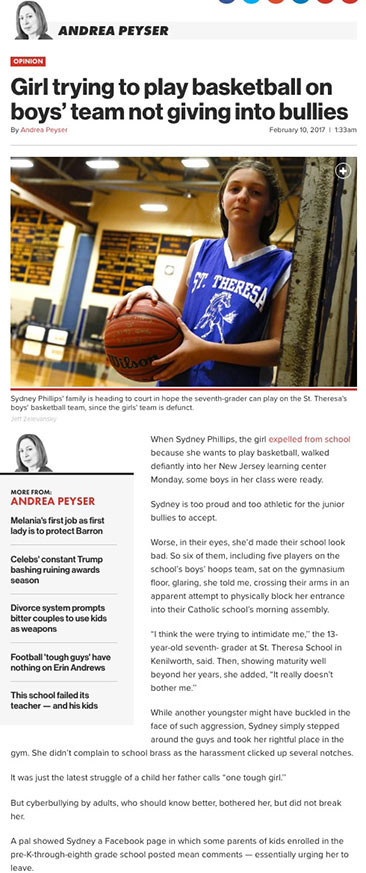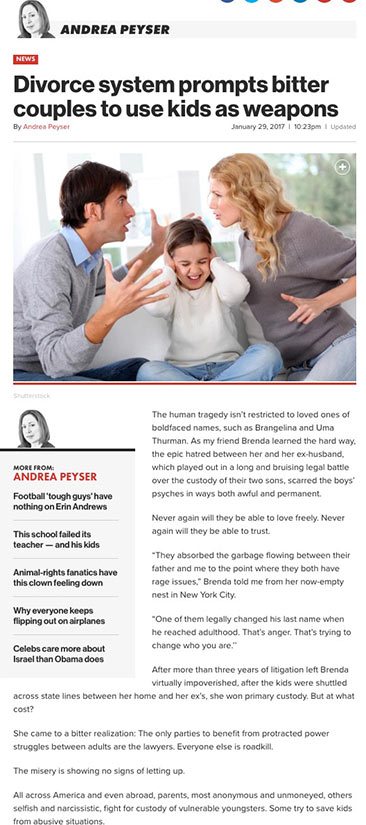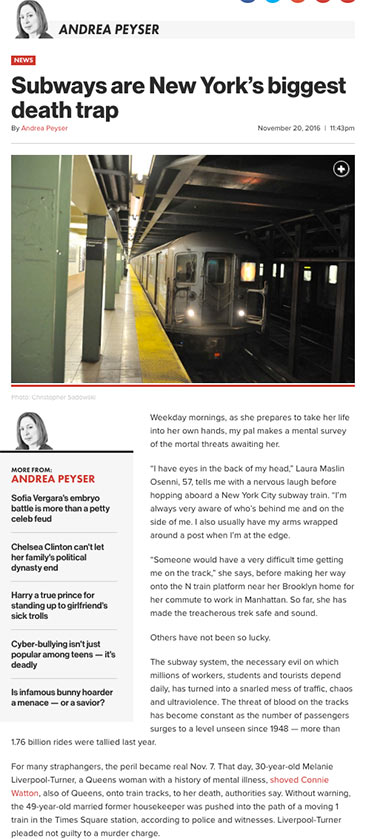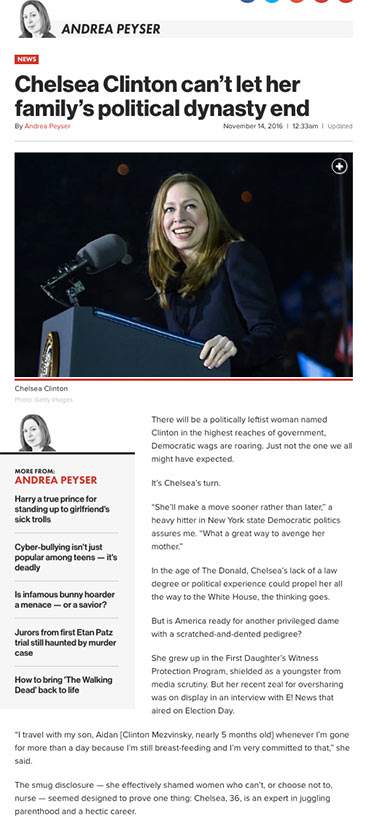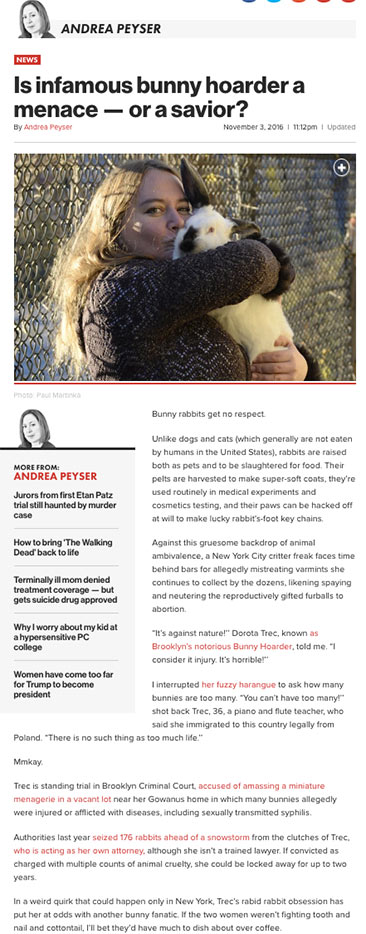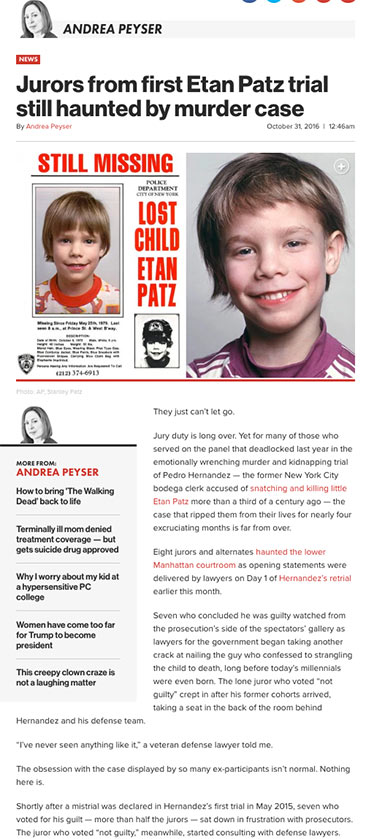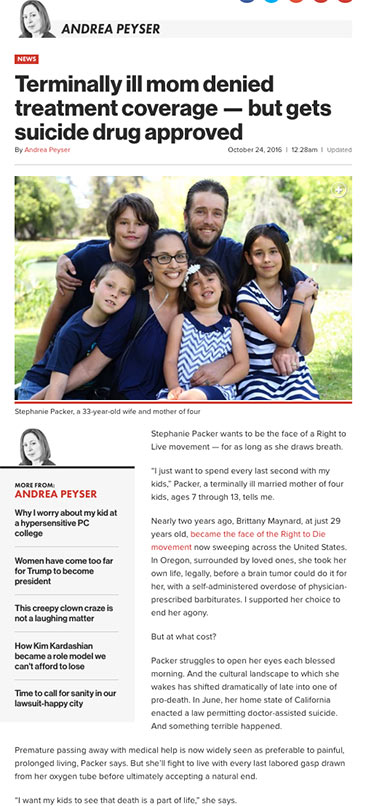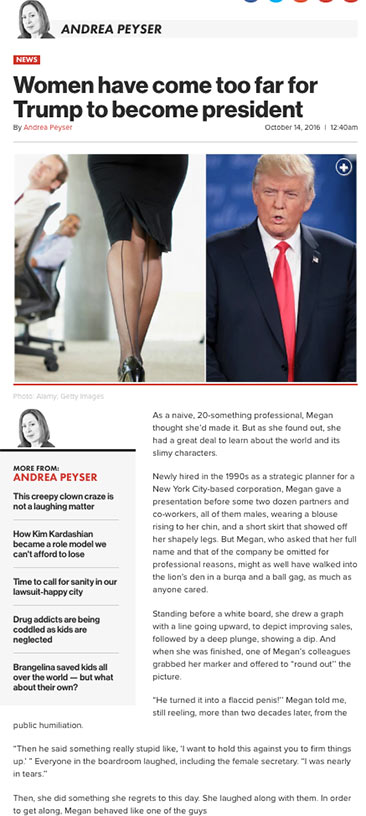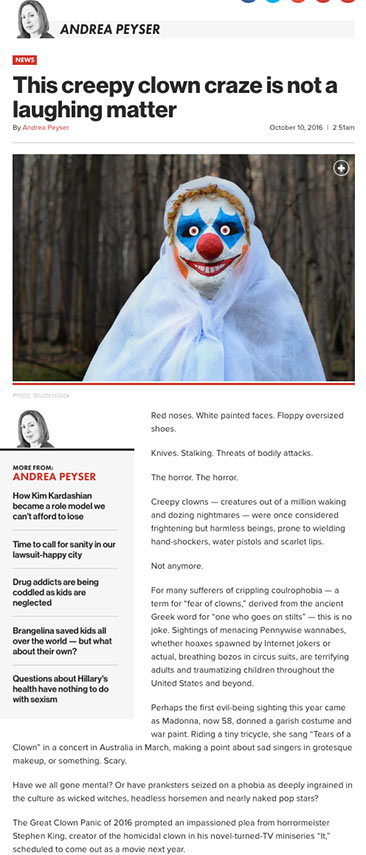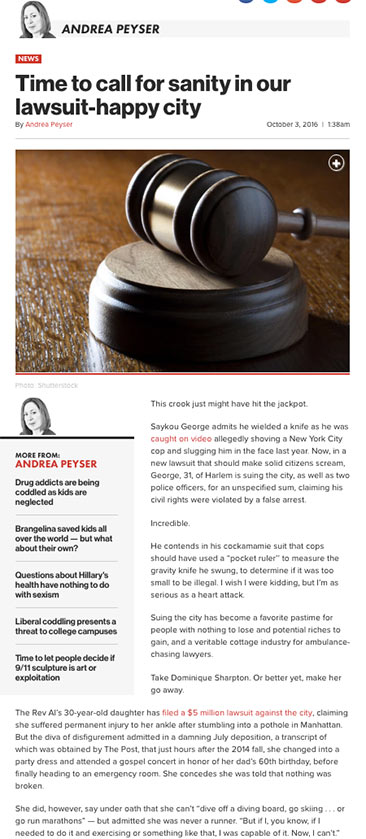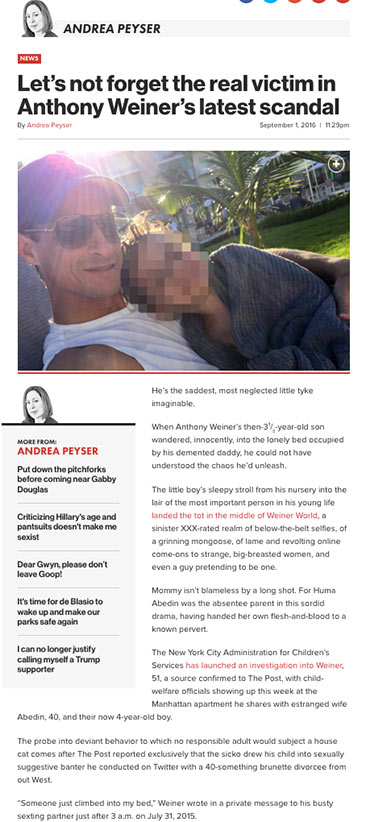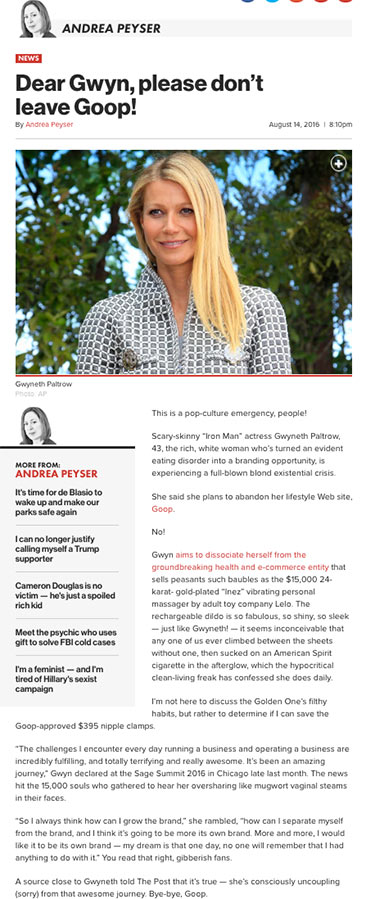©2007-2024
Andrea Peyser and andreapeyser.com; No Reuse without permission.
•Contact Us •Site Map •Biography •Appearances •Book Excerpt •Archive
Tuesday April 30, 2024
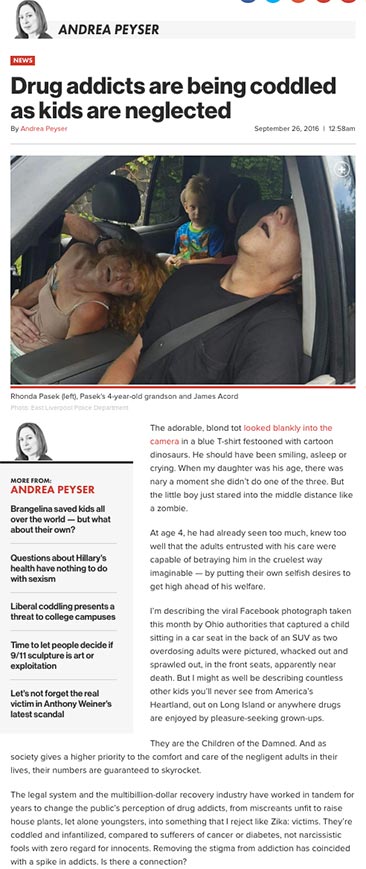
Read more content on NYPOST.com
By Andrea Peyser
September 26, 2016
Drug addicts are being coddled as kids are neglected
The adorable, blond tot looked blankly into the camera in a blue T-shirt festooned with cartoon dinosaurs. He should have been smiling, asleep or crying. When my daughter was his age, there was nary a moment she didn’t do one of the three. But the little boy just stared into the middle distance like a zombie.
At age 4, he had already seen too much, knew too well that the adults entrusted with his care were capable of betraying him in the cruelest way imaginable — by putting their own selfish desires to get high ahead of his welfare.
I’m describing the viral Facebook photograph taken this month by Ohio authorities that captured a child sitting in a car seat in the back of an SUV as two overdosing adults were pictured, whacked out and sprawled out, in the front seats, apparently near death. But I might as well be describing countless other kids you’ll never see from America’s Heartland, out on Long Island or anywhere drugs are enjoyed by pleasure-seeking grown-ups.
They are the Children of the Damned. And as society gives a higher priority to the comfort and care of the negligent adults in their lives, their numbers are guaranteed to skyrocket.
The legal system and the multibillion-dollar recovery industry have worked in tandem for years to change the public’s perception of drug addicts, from miscreants unfit to raise house plants, let alone youngsters, into something that I reject like Zika: victims. They’re coddled and infantilized, compared to sufferers of cancer or diabetes, not narcissistic fools with zero regard for innocents. Removing the stigma from addiction has coincided with a spike in addicts. Is there a connection?
“Absolutely, addiction rates have gone up,” says Steven Slate, who runs the New York City office of St. Jude Retreats, billed as an alternative to standard drug- and alcohol-rehab programs.
‘Alcoholics Anonymous offers a no-fault excuse — it’s not you, it’s the disease, and relapse is part of it’
- Steven Slate, who runs the New York City office of St. Jude Retreats
“Alcoholics Anonymous offers a no-fault excuse — it’s not you, it’s the disease, and relapse is part of it,” Slate, 40, tells me. “It’s a built-in excuse to keep using.”
Still, courts are likely to sentence drunken drivers and drug abusers to attend Alcoholics Anonymous or Narcotics Anonymous meetings. Los Angeles-based filmmaker Monica Richardson, 59, has executive-produced and appears in a scary new documentary, “The 13th Step,” which presents a damning portrait of the AA/NA behemoth.
“You are told you’re broken for life,” she tells me. Richardson attended AA and NA meetings after developing alcohol-drinking and pot-smoking habits as a teen. “I dropped out of high school because I drank. I drank daily in the evening with my father and his wife.”
The film’s title refers to the sexual assault — even murder — allegations and convictions that have tarnished the programs. Some of the predators, she says, were addiction counselors feasting on the weak.
When she was 18, says Richardson, two 20-years-older guys she met in AA had sex with her and her 20-year-old sister. “I almost killed myself. My sister was traumatized.”
A rep from AA world headquarters in New York City declined to comment.
Richardson says she cured herself of addiction, which 12-steppers claim is impossible. “I’d had enough.” After 37 years without a drop, she now drinks socially.
In 2014, deaths from drug overdoses in the United States, with heroin and prescription opioid painkillers leading the pack, reached an all-time high of 47,055, more than by firearms or in motor-vehicle crashes that year, according to the Centers for Disease Control and Prevention.
Relapse rates are off the charts. The National Institute on Drug Abuse estimates that monkeys again jump on the backs of addicts in 40 to 60 percent of cases. Some experts believe it’s higher.

Photo: East Liverpool Police Department
No programs saved Philip Seymour Hoffman or Whitney Houston.
The Ohio SUV photo gives a good glimpse of today’s degenerate junkies: Strung-out 50-year-old white grandmother Rhonda Pasek “turning blue,” said a cop, her slovenly bra straps spilling out of her tank top, lying zonked near her 47-year-old open-mouthed boyfriend, James Lee Accord, a white guy. With heroin cheap, the crisis has moved in large part from inner-city minorities to Caucasians living outside urban areas. The pair was brought back from the brink with the drug Narcan, and they’re serving jail terms after pleading guilty to endangeringa child and other crimes.
As for the little boy, his 25-year-old crack- and pot-smoking (she says ex-drug-using) stripper mom lost his custody, and he was handed to his unfit grandma just six weeks before she overdosed. His custody has since been awarded to a great-aunt and great-uncle who live in South Carolina. We can only pray the child grows up unscathed.
But with addicts getting preferential treatment over powerless little ones, I fear for the future.

